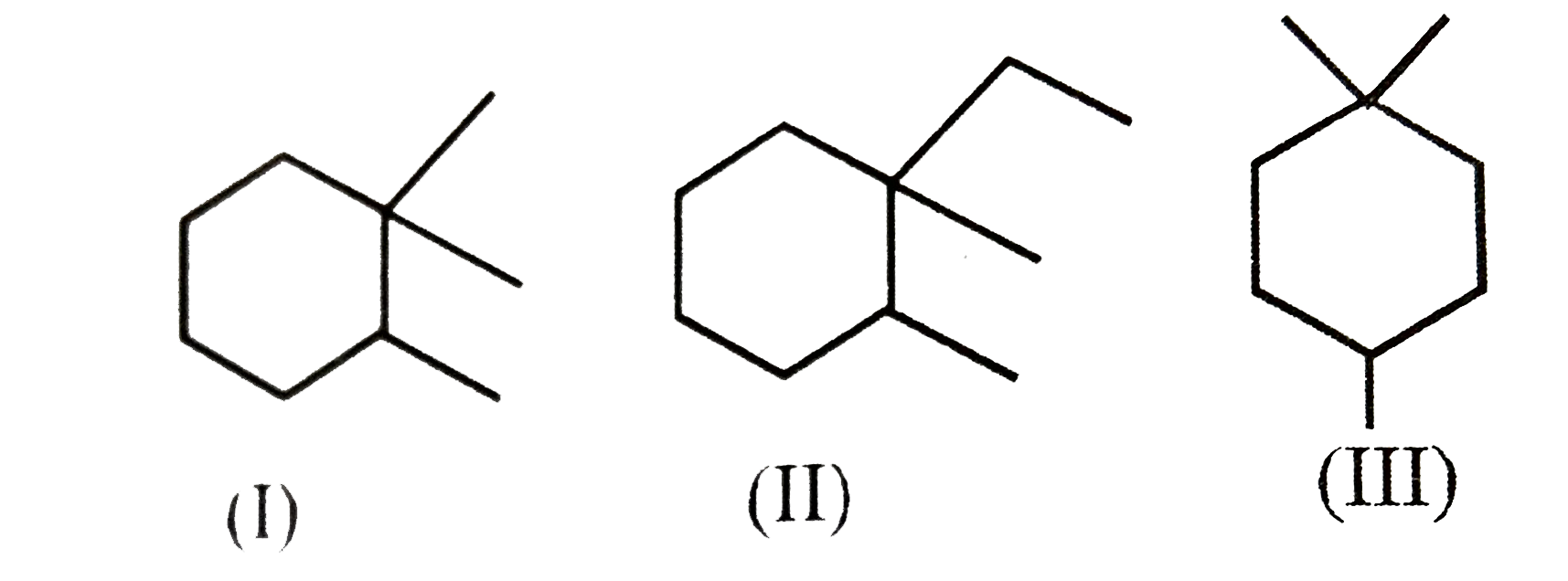The alkene that exhibits geometrical isomerism is
propene
2-methylpropene
2-butene
2-methyl-2-butene
The correct Answer is:C
To determine which alkene exhibits geometrical isomerism, we need to analyze the given options based on the criteria for geometrical isomerism (also known as cis-trans isomerism). This occurs when there is restricted rotation around a double bond and when two different groups are attached to each carbon of the double bond.
1. Understand the Criteria for Geometrical Isomerism:
- For an alkene to exhibit geometrical isomerism, it must have:
- A double bond (C=C).
- Different groups attached to each carbon of the double bond (i.e., A ≠ B and C ≠ D).
2. Analyze Each Option:
- Option A: Propene (CH3-CH=CH2):
- The structure is CH3-CH=CH2.
- The double bond is between the second and third carbon.
- Both carbons involved in the double bond have identical hydrogen atoms (H), making it impossible to have different groups.
- Conclusion: Propene does not exhibit geometrical isomerism.
- Option B: 2-Methylpropene (CH3-CH(CH3)-CH2):
- The structure is CH3-CH(CH3)-CH2.
- The double bond is between the second and third carbon.
- Again, there are identical groups (H) on the double-bonded carbons.
- Conclusion: 2-Methylpropene does not exhibit geometrical isomerism.
- Option C: 2-Butene (CH3-CH=CH-CH3):
- The structure is CH3-CH=CH-CH3.
- The double bond is between the second and third carbon.
- The groups attached to the double-bonded carbons are different (one has CH3 and the other has H).
- Conclusion: 2-Butene can exhibit geometrical isomerism (cis and trans forms).
- Option D: 2-Methyl-2-butene (CH3-C(CH3)=CH-CH3):
- The structure is CH3-C(CH3)=CH-CH3.
- The double bond is between the second and third carbon.
- Both groups on the double-bonded carbon are identical (CH3), which means it cannot exhibit geometrical isomerism.
- Conclusion: 2-Methyl-2-butene does not exhibit geometrical isomerism.
3. Final Answer:
- The alkene that exhibits geometrical isomerism is Option C: 2-Butene.
- For an alkene to exhibit geometrical isomerism, it must have:
- A double bond (C=C).
- Different groups attached to each carbon of the double bond (i.e., A ≠ B and C ≠ D).
- Option A: Propene (CH3-CH=CH2):
- The structure is CH3-CH=CH2.
- The double bond is between the second and third carbon.
- Both carbons involved in the double bond have identical hydrogen atoms (H), making it impossible to have different groups.
- Conclusion: Propene does not exhibit geometrical isomerism.
- The structure is CH3-CH(CH3)-CH2.
- The double bond is between the second and third carbon.
- Again, there are identical groups (H) on the double-bonded carbons.
- Conclusion: 2-Methylpropene does not exhibit geometrical isomerism.
- The structure is CH3-CH=CH-CH3.
- The double bond is between the second and third carbon.
- The groups attached to the double-bonded carbons are different (one has CH3 and the other has H).
- Conclusion: 2-Butene can exhibit geometrical isomerism (cis and trans forms).
- The structure is CH3-C(CH3)=CH-CH3.
- The double bond is between the second and third carbon.
- Both groups on the double-bonded carbon are identical (CH3), which means it cannot exhibit geometrical isomerism.
- Conclusion: 2-Methyl-2-butene does not exhibit geometrical isomerism.
- The alkene that exhibits geometrical isomerism is Option C: 2-Butene.
Topper's Solved these Questions
- HYDROCARBONS BOOK - NCERT FINGERTPS ENGLISHCHAPTER - HYDROCARBONS EXERCISE - Higher Order Thinkin Skills
7 Videos
- HYDROCARBONS BOOK - NCERT FINGERTPS ENGLISHCHAPTER - HYDROCARBONS EXERCISE - Assertion & Reason
15 Videos
- EQUILIBRIUM BOOK - NCERT FINGERTPS ENGLISHCHAPTER - EQUILIBRIUM EXERCISE - Assertion And Reason
15 Videos
- HYDROGEN BOOK - NCERT FINGERTPS ENGLISHCHAPTER - HYDROGEN EXERCISE - Assertion And Reason
15 Videos
Similar Questions
Knowledge Check
Geometrical isomerism is caused
Aby restricted rotation around C=C bondBby the presence of one asymmetric carbon atomCdue to the differennt groups attached to the same functional groupDby swing of hydrogenn atom between two divalent atoms.Which of the following types of compounds is unable to exhibit geometrical isomerism ?
Aabc = CabBaxC = CayCaaC = CabDnone of these
Explain why compounds of the type aaC=Cab are unable to exhibit geometrical isomerism?
View SolutionWhich of the following can exhibit geometrical isomerism?
View SolutionThe geometrical isomerism is shown by:
View SolutionA: All square planar complexes can exhibit geometrical isomerism.
R: In square planar complexes metal assumes sp3 hybridisation.
View SolutionWhich of these will exhibit geometrical isomerism ?

View SolutionWhich of these will exhibit geometrical isomerism ?

View Solution
